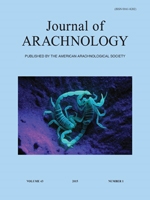Plantation forests are being planted at an increasing rate and account for 7% of the global forested area. The majority of planted forests are composed of exotic tree species, and Eucalyptus trees have become the most widely planted hardwood species in the world. While Eucalyptus plantations have economic importance, their role in native biodiversity conservation, especially in areas without naturally occurring forests, is little explored. In the present study, we assessed the impact on biodiversity of replacing natural semi-deserts with Eucalyptus camaldulensis plantations. The impact was evaluated by comparing epigeal spider communities of seven plantations with previously sampled communities of seven natural habitats in the northwestern Negev, Israel. In contrast to our assumptions, spider species richness was higher in Eucalyptus plantations compared to natural semi-deserts. However, substantial differences in species composition between the two habitat types were observed. Few species found in natural semi-deserts were sampled in the plantations, suggesting that Eucalyptus plantations cannot substitute for natural semi-desert habitats.
How to translate text using browser tools
1 April 2015
Effects of non-native Eucalyptus plantations on epigeal spider communities in the northern Negev desert, Israel
John D. Herrmann,
Itai Opatovsky,
Yael Lubin,
Therese Pluess,
Efrat Gavish-Regev,
Martin H. Entling
ACCESS THE FULL ARTICLE

The Journal of Arachnology
Vol. 43 • No. 1
April 2015
Vol. 43 • No. 1
April 2015
afforestation
Eucalyptus camaldulensis
exotic plantation
land-use change
spider




